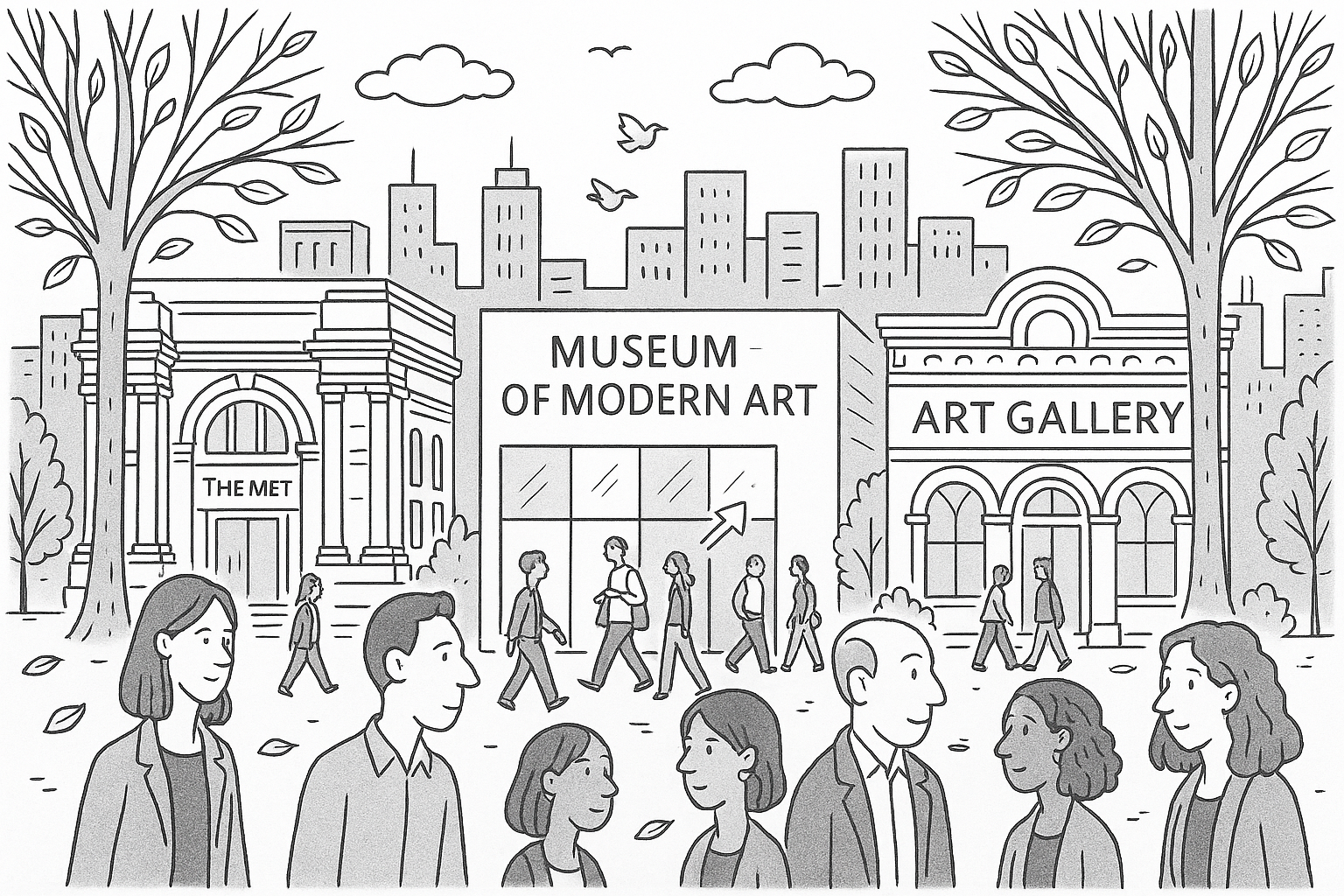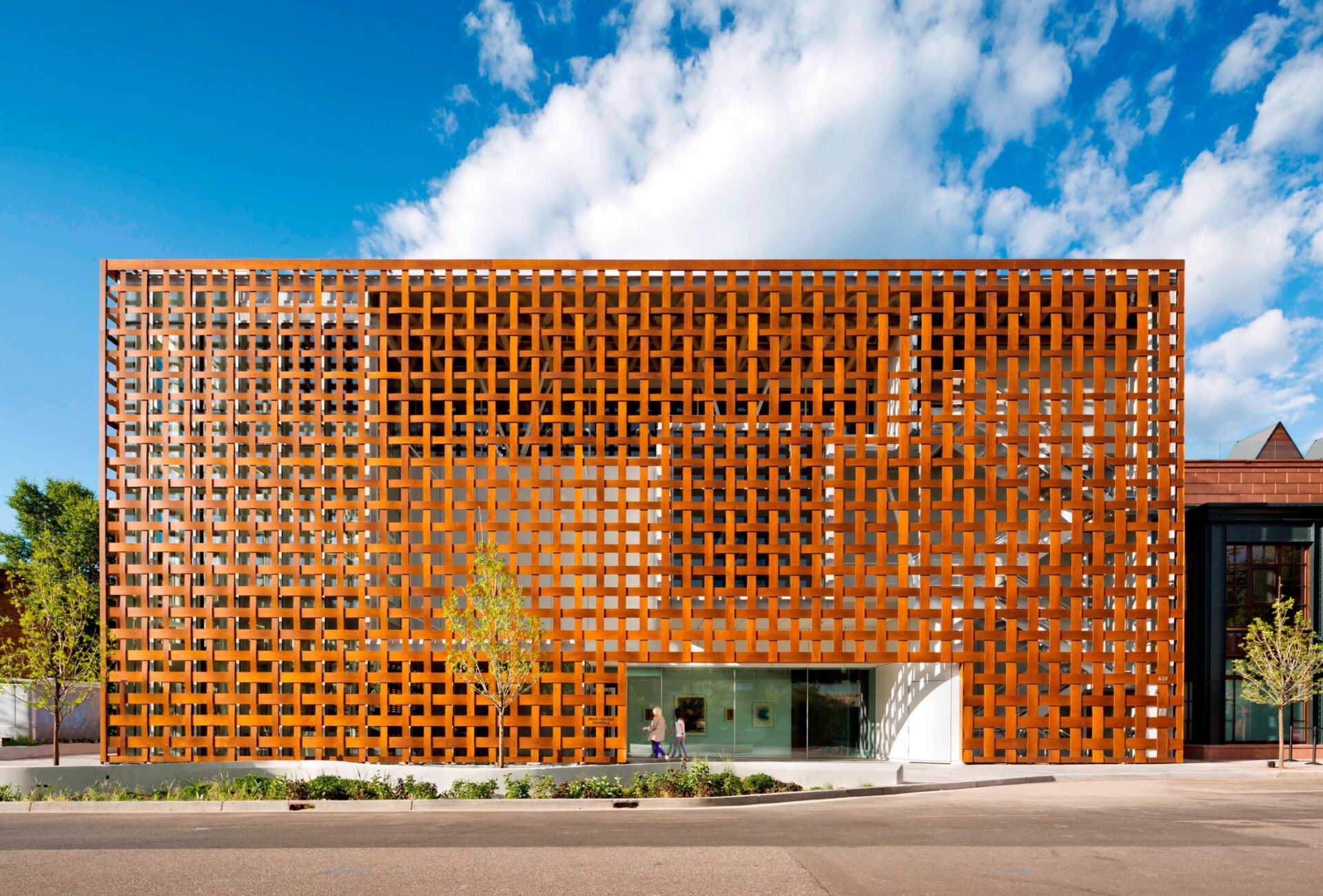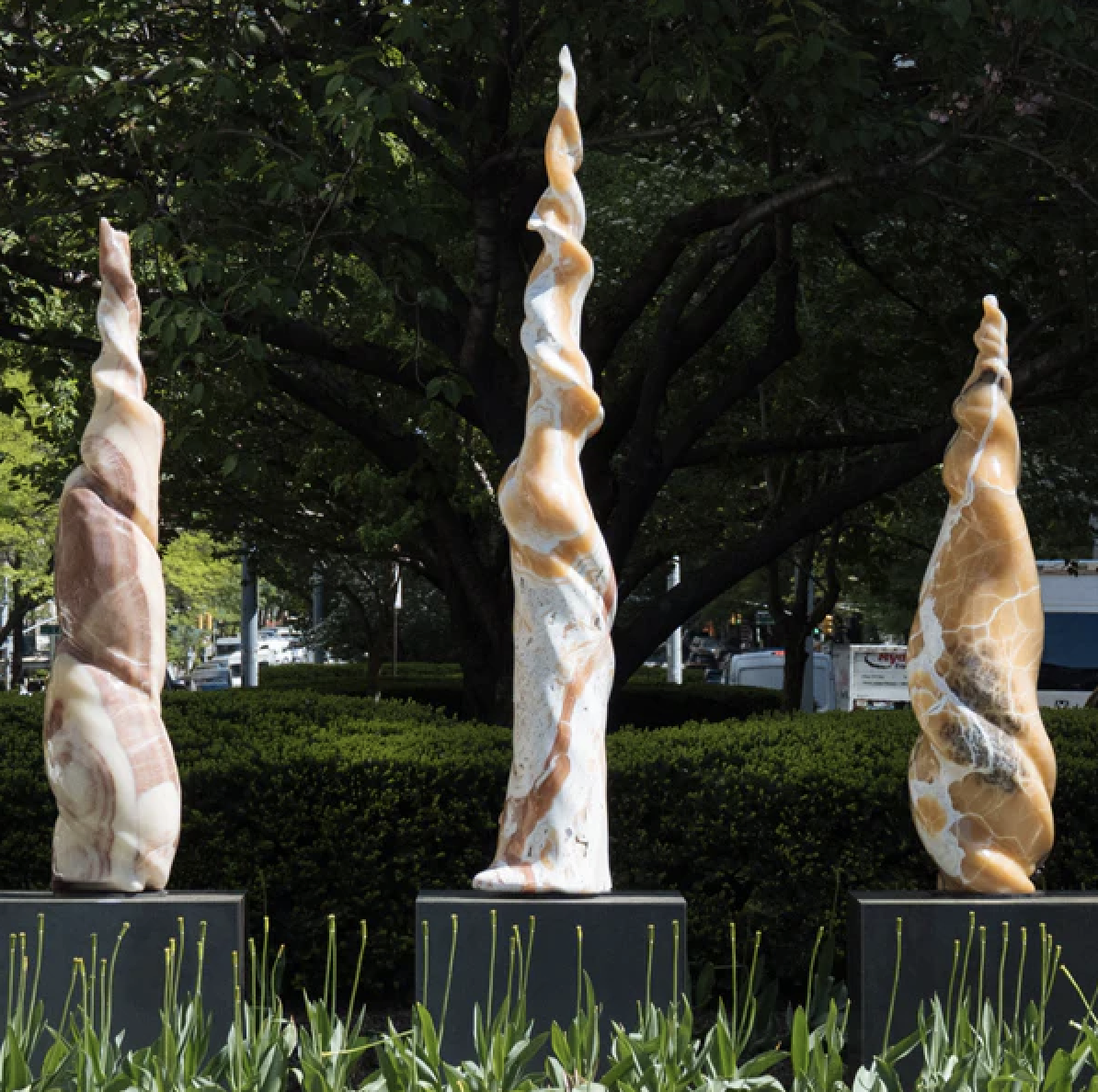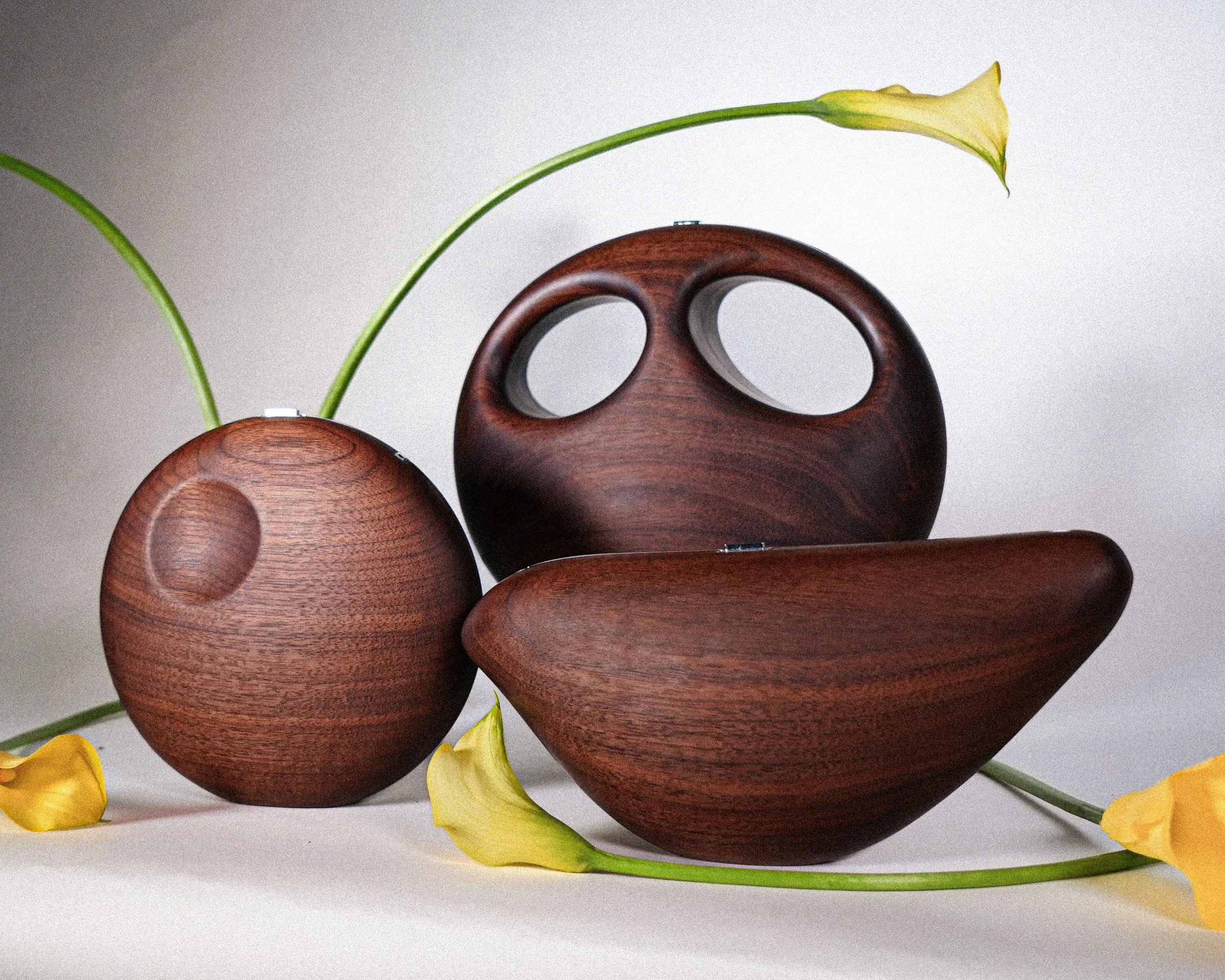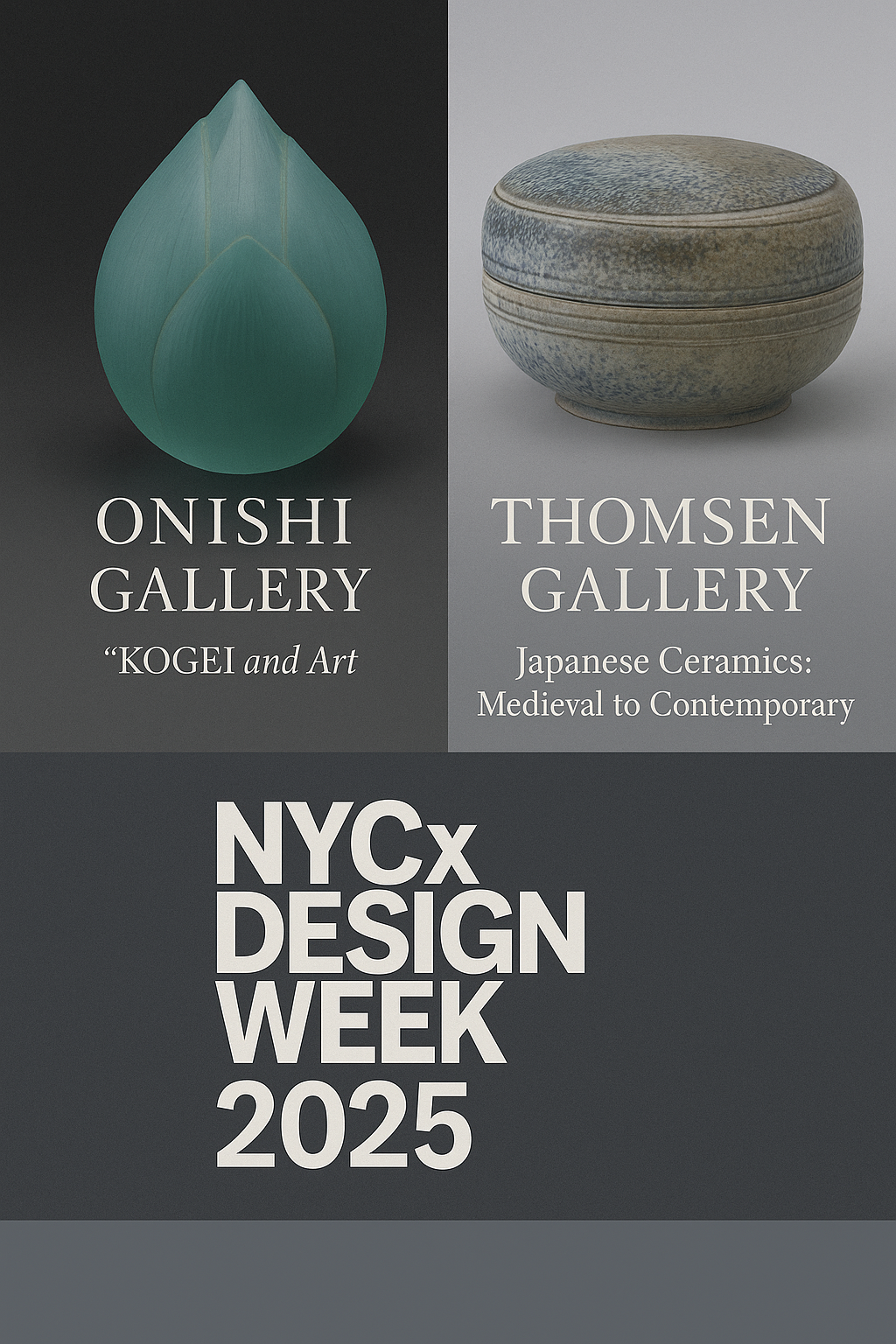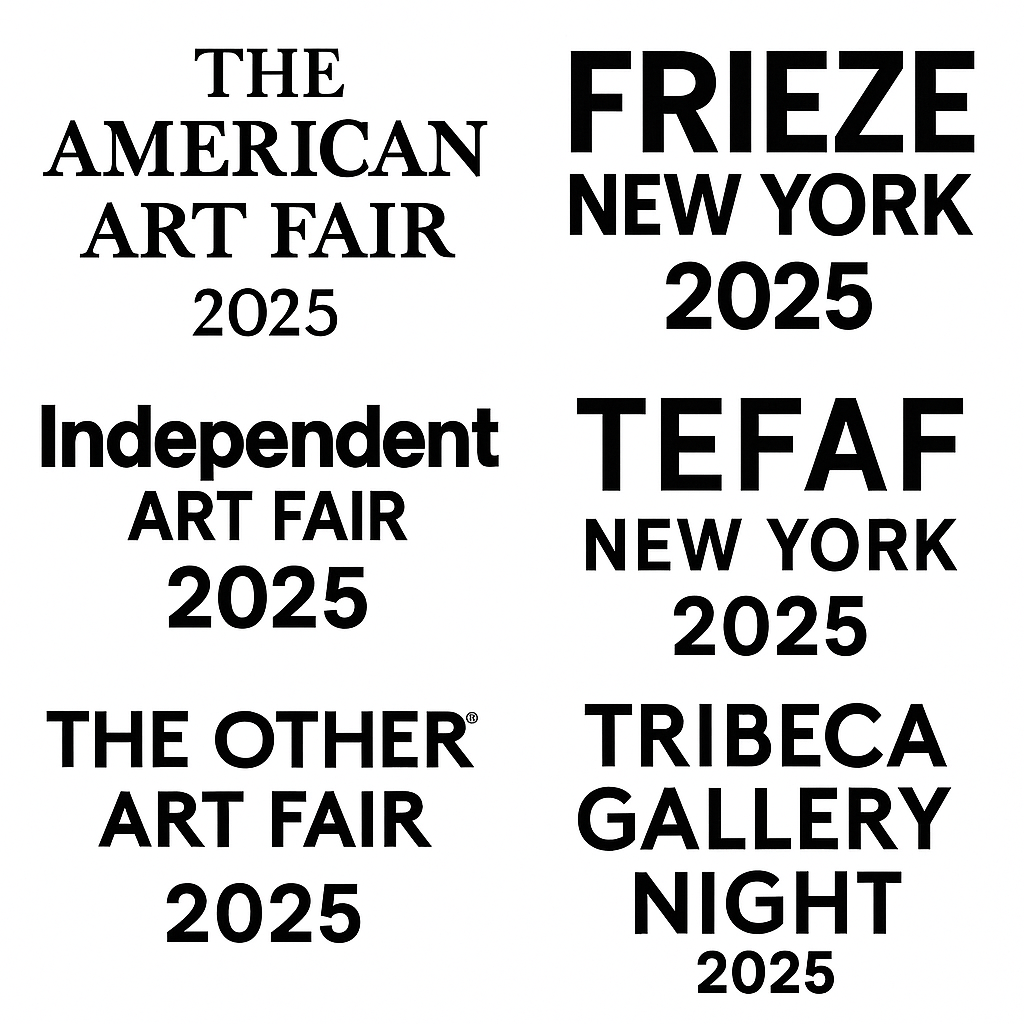Sunday Stacks: And We’re Back! (21 September)
Welcome back to the fall season of 2025 in the art world—a time when the light shifts, the leaves turn, and galleries and museums roll out exhibitions that dig deeper, provoke harder, and ask new questions about our place in the world. After a summer of ambitious fairs and blockbuster retrospectives, the autumn schedule seems calibrated for both intimacy and scope: solo shows that explore identity, multimedia installations that interrogate labor, and sweeping historical surveys that reclaim neglected narratives. If you’ve been craving something that both inspires and unsettles, this fall delivers.
As you map out an art crawl for the week or weekend, consider these outstanding offerings:
The Metropolitan Museum of Art has some must-see exhibitions: Man Ray: When Objects Dream (Sept 14, 2025–Feb 1, 2026) is spotlighting Man Ray’s rayographs in the broader context of his experimental work. Christie's+1
MoMA has several strong shows: Stephen Prina: A Lick and a Promise, New Photography 2025: Lines of Belonging, Odili Donald Odita: Songs from Life, and Sasha Stiles: A Living Poem (through Spring 2026) are all on view. The Museum of Modern Art
Museum of the City of New York (MCNY) is showing Robert Rauschenberg’s New York: Pictures from the Real World through October 5, 2025—rare photos & works that explore his relationship with NYC. MCNY
Berry Campbell: Mercedes Matter (Sept 5-Oct 4, 2025). A rewarding rediscovery of an under-recognized Abstract Expressionist, with bold canvases and drawings. Artnet News
Miles McEnery Gallery: Gabrielle Garland: I’ll Get You, My Pretty, and Your Little Dog Too (Sept 4-Oct 25). Artnet News
James Cohan: Spencer Finch: One Hundred Famous Views of New York City (After Hiroshige) (Sept 5-Oct 4). A dialogue between Japanese woodblock aesthetics and modern urban perception. Artnet News
Thomas Erben Gallery: Harriet Korman: Housing Development / New Paintings and Drawings (Sept 11-Oct 25). Ocula
Gagosian has several high-profile shows: Cady Noland (Sept 10-Oct 18), Steven Parrino (Sept 10-Oct 18), Nathaniel Mary Quinn: Echoes from Copeland (through Oct 25) at its West 24th Street locations. Ocula
Hauser & Wirth: Ambera Wellmann: Darkling (Sept 5-Oct 25) on Wooster Street; also Don McCullin: A Desecrated Serenity with his photography. Ocula
Sunday Stacks: Colorado (27 July)
As it heats up here on the East Coast this month, I have been looking westward…specifically to Colorado where the mountains provide a cool backdrop (bad pun, I know) for some consistently creative and fresh art experiences.
Aspen bursts into its summer art season in August with a mix of world-class exhibitions, cultural talks, and immersive festivals. Highlights of Aspen Art Week include the Aspen Art Fair, held at the historic Hotel Jerome from July 29 to August 2, 2025. This boutique fair features over 40 international galleries, melding art, design, hospitality, and luxury. In addition to curated booth displays, attendees enjoy artist‑in‑residence projects, expert‑led talks, gallery tours, cocktail receptions, curated hikes, and even river plunges—a fully immersive cultural experience in the Rockies.
Coinciding with Aspen Art Fair is Intersect Aspen, a distinguished art + design fair running from July 29 to August 3 at the Aspen Ice Garden. This intimate gathering showcases modern and contemporary pieces from galleries around the globe. Its programming includes themed conversations about art and the environment, mental health, social consciousness, and the Aspen community—combining artistic display with a forum for deeper engagement.
However, Aspen’s visual arts calendar extends beyond fairs. The Aspen Art Museum hosts ArtCrush on August 1, a gala celebrating this year’s Lewis Family Art Award recipient, Glenn Ligon, accompanied by performances and newly commissioned pieces. Art Week also embraces AIR (Artist in Residence), a program blending art, science, and technology through bold experimentation and public discourse in partnership with the museum.
Meanwhile, music and performing arts continue through August as part of the Aspen Music Festival and School, running from July 2 to August 24 under the theme “Concerning the Spiritual in Art.” Featured events include the world premiere of Christopher Theofanidis’s “Siddhartha, She”, Renée Fleming’s operatic directorial debut in Così fan tutte, Mariachi workshops, orchestral concerts, chamber recitals, and education programs with nearly 650 artists-in-training performing alongside leading professionals.
Together, these events turn Aspen into a vibrant hub where locals and visitors alike can experience visual art, performance, and dialogue in magnificent mountain surroundings every August.
Sunday Stacks: ILY2 (30 June)
ILY2, newly-opened in New York at 35 Saint James Place in Chinatown (previously home to the James Fuentes Gallery) brings a fresh, deeply human approach to the contemporary art scene.
Originating in Portland, the gallery was co-founded by Allie Furlotti and Jeanine Jablonski, with Rosie Motley joining to lead the New York chapter. From the start, ILY2 has been committed to creating spaces that feel welcoming rather than intimidating, celebrating a playful, community-driven ethos. Their inaugural New York show, SOFT PINK HARD LINE: PART II, introduced this spirit with an ice-cream truck, casual seating, and an atmosphere that encouraged visitors of all ages to linger and connect — a stark contrast to the often rigid, sterile feel of traditional gallery openings.
At the heart of ILY2’s philosophy is a management style that foregrounds radical care and emotional intelligence. Unlike many galleries where staff endure high-pressure, sales-driven environments, ILY2 prioritizes flexibility, inclusivity, and overall well-being. They emphasize a work-life balance to foster a more humane workplace. This approach extends to how they design events — favoring block-party-style gatherings over exclusive VIP previews — creating a sense of community and shared experience rather than division and hierarchy.
This commitment to creating an intentionally “human-friendly” space—combining playfulness, accessibility, and curatorial care distinguishes ILY2 in New York’s saturated art landscape. The leadership openly rejects the burnout-driven, cortisol-fueled gallery model, opting instead to adopt flexible hours, host block-party openings, pay for staff menstrual leave, and invest in long-term artist support. This approach is infused into every aspect of their operations, from artist residencies to youth programming (I♡Youth2) and a brainstorm-forward attitude that values emotional investment alongside exhibition-making
This same ethos extends to their relationships with artists. ILY2 prefers to build long-term, supportive partnerships rather than focus solely on quick sales or market trends. Artists are encouraged to experiment, push boundaries, and engage in authentic dialogue without the constraint of purely commercial considerations. By investing deeply in the artist's creative process and fostering intergenerational exchange, the gallery provides a rare platform where artistic growth is valued over immediate financial return.
Overall, ILY2 offers a radically refreshing model for what a contemporary gallery can be: not just a showroom, but a living, breathing community space. By dismantling hierarchies and replacing transactional relationships with authentic care, they create an environment where both staff and artists feel genuinely supported. In doing so, ILY2 challenges the broader art world to reconsider its priorities and paves the way for a more accessible, inclusive, and ultimately more human-centered approach to contemporary art.
Sunday Stacks: Basel 2025 (22 June)
Art Basel, exhibiting art of the 20th and 21st centuries, is indisputably the world's leading fair in the international art market. This year, collectors, galleries, museums, and the world’s art cognoscenti converged in Basel from June 19th-22nd, a spectacular show of art’s past, present, and future. With 289 galleries from 42 countries, the fair showcased over 4,000 artists and introduced new programming aimed at spotlighting rising voices alongside modern masters. Critics noted the strategic expansion with the new Premiere sector—focused on cutting-edge works from the past five years—which brought mid-career and emerging galleries into the spotlight. Director Maike Cruse emphasized the sector as a stage for galleries transitioning from “emerging to blue-chip” influence.
One of the most talked-about highlights was CHOIR, a monumental ephemeral spray-painted installation by Katharina Grosse, which enveloped Messeplatz in swirling white and magenta (see image). Viewed as a vivid and bold challenge to the fair’s commercial context, the piece prompted visitors to reflect on the socially and politically relevant issues of ownership and impermanence. Its scale and immersive design received widespread acclaim, with scholars and critics applauding the dialogue between architecture, color, and public space.
In the Unlimited sector, curated by Giovanni Carmine, large-scale and performance-based works took center stage. Marinella Senatore’s illuminated sculpture We Rise by Lifting Others, a sprawling community-based statement on social solidarity, drew significant praise. Meanwhile, the Galleries and Premiere sections featured heavyweight paintings: a late-career Picasso (Homme à la pipe…), Joan Mitchell, and Helen Frankenthaler’s Swan Lake I were heralded as museum-caliber highlights.
Beyond the artworks themselves, this year’s Fair also introduced the inaugural Art Basel Awards, in collaboration with Hugo Boss, celebrating 36 medallists—including curators, institutions, and artists—for their visionary contributions. Satellite events, including Stefanie Hessler’s ambitious Parcours public-art program and the grassroots Basel Social Club pop-up, broadened the fair’s reach across Basel, turning the city into a festival of contemporary creativity.
Overall, Art Basel 2025 not only showcased extraordinary individual works, but also reflected a committed shift toward inclusivity, experimentation, and community—positions reaffirmed by scholars, popular culture press, and artists alike. The blend of immersive installations, cross-generational representation, and new awards marks a critical evolution in how art fairs can foster meaningful global dialogue.
SUNDAY STACKS: The Malls of Park Avenue (15 June)
Park Avenue’s medians—affectionately known as the “Park Avenue Malls”—have long served as a majestic open-air gallery, curated by the Fund for Park Avenue and NYC Parks’ Art in the Parks. The tradition dates back to the 1960s, but gained momentum in the early 2000s with a series of bold sculptural interventions: from Louise Nevelson’s stark abstract assemblages to Alice Aycock’s sweeping “Paper Chase” forms that mimicked updrafts of swirling paper across mid‑avenue. With each project, these urban green strips have become dynamic stages showcasing both masterworks and emerging voices in public art.
More recently—and delightfully—Park Avenue has embraced large-scale seashell and animal sculptures. The seashell and animal sculptures installed along the Park Avenue Malls create a lyrical interplay between nature’s forms and the city’s architectural geometry. Their aesthetic impact lies in their organic contours and biomorphic stylization—rounded edges, gentle spirals, faceted planes—that soften the rectilinear lines of midtown’s steel-and-glass towers. Both installations were selected by a committee including the Fund for Park Avenue’s Sculpture Committee, NYC Parks’ Art in the Parks, and partnering galleries, including Kasmin Gallery. They considered aesthetics, structural durability, and public engagement, aiming to blend art with ecology and urban life. The animals animate the city grid with playful movement and bold colors, while the seashells introduce a quieter, more contemplative presence—together creating a dialogue between whimsy and wonder. Park Avenue’s median thus becomes a curated meeting place where the geological and the zoological—shell and beast—converge in sculptural harmony.
The suite of oversized seashell pieces carved from marble and metal are now dotting the sidewalks—sleek, reflective sculptures that evoke the ocean’s mystery and invite audiences to reflect on nature’s artistry. Created by Utah‑born, Mexico-based artist Alma Allen, these new works debuted in May 2025. Often rendered in gleaming bronze or smooth white stone, the shells seem to pulse with a quiet, oceanic rhythm, evoking both ancient fossils and modern minimalism. Many stand over 10 feet tall—echo natural forms with a fluid, tactile presence. Allen’s roots in carving found marble from broken city curbs in the 1990s make Park Avenue a particularly resonant site: urban debris transformed into elemental beauties.
Complementing these sea formations are the colorful, polygonal animal sculptures—featuring Rexor the T‑rex, Mojo the Gorilla, Baloo the Bear, Manny the Mammoth, and company—are the work of French–Tunisian sculptor Idriss B. Known for his origami-like, faceted forms, Idriss B had previously exhibited these whimsical beasts in Dubai and Abu Dhabi before being invited by Patrons of Park Avenue (POPA) in collaboration with NYC Parks’ Art in the Parks program.
This origami-inspired menagerie has taken over the 34th–38th Street stretch in vibrant forms, luring passersby to stop, snap, and engage. Whether mammoths or gorillas, their faceted surfaces glint in the sunlight like origami come to life. The mammals—many extinct or endangered—point to evolution, memory, and resilience. Placed in close visual dialogue, they invite us to consider the vastness of Earth’s biodiversity and our place within it.
With a shared reverence for nature’s design—its logic, its elegance, its wonder–the land and sea installations feel united. The works aren’t naturalistic in a literal sense; they’re abstractions that heighten our awareness of pattern, scale, and the connection between all living things. The shells, with their Fibonacci spirals and iridescent finishes, suggest both fragility and endurance. Yet there is also a subtle ecological thread: in their juxtaposition, these sculptures remind viewers of the planet’s interconnected ecosystems—how marine life and terrestrial creatures coexist and are affected by environmental shifts.
Together, they continue Park Avenue’s legacy as an evolving canvas—one that balances monumentality with whimsy and history with surprise, turning the everyday commute into a stroll through a living gallery. Installed in the heart of a bustling urban grid, these artworks serve as gentle interventions—interrupting the rush of daily life with moments of contemplation. They transform Park Avenue into a surreal, open-air biotope, where sea and land meet in sculptural form, and where the natural world asserts its quiet, necessary presence amid the manmade.
SUNDAY STACKS: Form, Muse, Function: Brancusi, Picasso, and the Sculptural Elegance of Eittem (8 June)
Art and fashion have long been intertwined, with each influencing and elevating the other across centuries. In the 19th century, the Pre-Raphaelites painted women in flowing, medieval-inspired gowns that soon filtered into real-world dress reform movements, challenging Victorian corsetry with looser, more natural silhouettes. The aesthetic ideals of artists like James McNeill Whistler and John Singer Sargent also influenced fabric choices and the social presentation of elite women, turning portraiture into a medium of fashion documentation.
The 20th and 21st centuries deepened this relationship through collaborations and shared visual languages. In the early 20th century, Elsa Schiaparelli famously partnered with Surrealist artists like Salvador Dalí, while Yves Saint Laurent paid homage to Mondrian, Matisse, and Picasso in his garments. Today, the dialogue continues with brands like Louis Vuitton collaborating with contemporary artists such as Yayoi Kusama and Takashi Murakami, and designers like Iris van Herpen using 3D printing and digital modeling to create garments that are indistinguishable from kinetic sculpture. Across centuries, art and fashion have remained co-conspirators in the pursuit of beauty, identity, and cultural commentary.
Continuing this trend but taking it to an entirely new level, is the Chelsea-based luxury handbag designer Eittem whose exquisitely skilled artist-makers painstakingly create these hand-sculpted walnut vessels. We were invited to visit the workshop two weeks ago for a first look and meet-and-greet with the designers and artisans.
Every step of the process in creating these handbags is about process and perfection. As a result, the handbags are not merely accessories; they are sculptural statements that blur the boundaries between fashion and art. Each design is infused with a purity of line and material that echoes the modernist clarity found in Brancusi’s Fish (1930) and Bird in Space (1923). Just as Brancusi distilled the essence of flight into an abstract, aerodynamic form, and the gentle hollow of the eyes and face in Mademoiselle Pogany (1912), Eittem distills functionality into sleek silhouettes that feel simultaneously futuristic and primal. The surfaces of the bags—smooth, reflective, or matte—play with light in much the same way Brancusi’s polished bronzes do, inviting the viewer not just to look, but to contemplate.
The comparison extends further with Sleeping Muse (1910), Brancusi’s minimalist vision of a reclining head, which emphasizes serenity, balance, and the sensuous curve. Eittem’s rounded closures and arched handles evoke similar qualities of repose and wholeness. There’s a quiet tension between softness and structure in these bags that mirrors the emotional duality of Brancusi’s work. These are not aggressive luxury pieces; they are meditative, almost talismanic objects that seem to carry both history and potential.
One also finds resonance with Picasso’s representations of Marie-Thérèse—particularly in how Eittem’s forms appear both abstract and deeply personal. Picasso’s paintings and sculptures of Marie-Thérèse, with their undulating shapes and exaggerated curves, embody a feminine presence rendered through Cubist fragmentation and surreal elegance. Eittem’s handbags, especially those with asymmetrical shapes or unexpected material contrasts, seem to nod to this aesthetic—articulating femininity not through ornament but through contour and intention. These handbags are wearable sculptures, poised at the intersection of utility and expression.
SUNDAY STACKS: That is Surreal! (2 June)
This week I want to focus on Surrealism— a cultural and artistic movement that emerged during the 1920s and 1930s, primarily in Europe, as a reaction against the prevailing rationalism and the horrors of World War I. Surrealist artists strove to express the unconscious mind, often through dreamlike or illogical imagery, exploring the realm of the irrational and the unexpected. To this day, their influence continues to be profound and far-reaching.
This summer four standout shows on the Upper East Side connect art work across time and medium, offering an illuminating look at the psychological intensity, personal mythology, and fractured form that characterized Surrealism. Throughout these exhibitions, viewers are invited to consider how artists harness distortion and the unconscious to communicate something more raw and enduring than traditional realism ever could.
At Di Donna Galleries, The Surrealist Collage: Where Dreams and Reality Meet, works by Max Ernst, Joseph Cornell, and Meret Oppenheim, among others, showcase how collage was used to merge the rational and the subconscious. The show is both playful and disquieting, revealing how disjointed imagery can express the deeper truths of the human experience.
Just a few blocks away, on view at Gagosian (Madison Avenue) is Picasso: Tête-à-Tête focuses on the artist’s sculptural heads, echoing the psychological compression found in Di Donna’s collages. Here, faces are fragmented, rearranged, and reborn in clay and bronze—emphasizing identity as mutable and performative. This same push toward expressive distortion is evident at Hirschl & Adler Modern, where Franz Kline’s early works on paper expose a surprising surrealist side of the painter best known for abstraction. These seldom-seen drawings show a young artist grappling with form, language, and dream imagery before committing fully to the gesture and physicality to be mined in a brushstroke.
At Levy Gorvy Dayan, rising star Austyn Weiner’s first solo show in New York channels this lineage of artistic introspection into something boldly contemporary. Her large-scale canvases burst with emotional urgency and vivid color, collapsing personal experience into abstract, almost mythic forms. Like the Surrealists, Weiner mines the chaos of the interior world—but her approach feels defiantly current, mixing the painterly with the confessional.
I want to offer a bit of encouragement, or a gentle push to those who are not fans of Surrealism or abstraction—trust me—there is much to be seen and enjoy in these shows… and they are all within reasonable proximity. So take a leap of faith and have a look. I think you’ll be glad you did.
SUNDAY STACKS: A Month of Art and Design (11 May)
May is a pivotal month in the art and design world, marking the crescendo of the spring season before the slower-paced summer months. With major fairs, gallery walks, and design festivals converging in quick succession, the city has been pulsing with creativity and cultural energy. Institutions and galleries time their most ambitious programming for May, knowing that collectors, curators, and design aficionados are in town and eager to engage. As June approaches, the calendar begins to quiet down, with many galleries using the summer to regroup, plan fall exhibitions, or focus on private appointments—making May the last major moment before the seasonal slowdown. Here’s what we’ve seen and with only one week before Memorial Day where we suggest you focus your Spring energy.
This past Saturday the Madison Avenue Spring Gallery Walk transformed Manhattan's Upper East Side into a vibrant cultural corridor. Spanning East 57th to East 86th Streets, 46 galleries opened their doors for a day of free exhibitions and expert-led talks. Highlights included Onishi Gallery's "KOGEI and Art," showcasing contemporary Japanese craftsmanship across various mediums, and Thomsen Gallery's inaugural exhibition at their new location, featuring "Japanese Ceramics: Medieval to Contemporary". Attendees had the opportunity to engage directly with artists and curators, deepening their appreciation for the diverse artworks on display.
Concurrently, New York Design Week 2025, running from May 15–21, is captivating the city with a multitude of design-focused events. Anchored by the NYCxDESIGN festival, this year's theme, "Design is for Everyone", emphasizes inclusivity and innovation. Notable exhibitions include Faye Toogood's "Lucid Dreams" at The Future Perfect, featuring hand-painted furniture and sculptural lighting, and Kvadrat Febrik's debut of 100% recyclable fabrics by Note Design Studio. The week also marks the introduction of "Shelter," a new design fair and marketplace at the Starrett-Lehigh Building, spotlighting over 100 international creatives. With events spread across Manhattan, Brooklyn, and Queens, New York Design Week 2025 offers a dynamic exploration of contemporary design's role in society.
SUNDAY STACKS: Independent 2025 (11 May)
Independent 2025 marks 15 years since the gallerist, Elizabeth Dee designed and conceived of the art fair as a way to provide a ‘different spin’ on artists, galleries and public access to innovative, emerging art. Dee is now also the CEO of the Independent which has been held at Spring Studios since 2016. The carefully-curated selection of galleries which Dee hand-picks for this unique fair is the result of her advocacy for smaller galleries–in particular, those less focused on capitalistically-driven emerging art and artists. The Independent was a true highlight of this year’s New York Art Week. I spent an entire day in Tribeca at the fair and found it to be one of the best I’ve seen this week.
Booths by Abattoir, Callirrhoë, Niru Ratnam, Harlesden High Street, The Meeting, and Kerry Schuss were standouts, resisting the more market-fluent aesthetics that often dominate large art fairs. Rather than emphasizing polished spectacle or trending conceptual motifs, these booths foreground process, identity, and lived experience—often through understated yet formally rigorous means. Each of the artists presented at these galleries leans into material honesty, and each gallery partners with their artists, taking curatorial risks that prioritize artistic integrity over quick appeal.
Michelle Grabner’s installation at Abattoir is a prime example. Her transformation of cleaning equipment and industrial forms into sculptural assemblages infuses overlooked materials with both reverence and critique. Similarly, Nicole Economides at Callirrhoë uses her Greek-American heritage not as backdrop but as infrastructure—incorporating literal support elements like cheese barrels and oil drums into her paintings, forging a dialogue between culture, commodity, and canvas that feels both grounded and conceptually daring.
In contrast to highly produced figurative painting or digital works seen elsewhere, the artists at Niru Ratnam and Harlesden High Street emphasize introspection and embodied experimentation. London-based artists Juliette Blightman and Laila Majid offer different but interwoven approaches to abstraction and identity—works that are emotionally charged yet formally restrained. Savannah Harris, meanwhile, presents large-scale tactile paintings that resonate with geological rhythms rather than social commentary, offering a rare, contemplative counterpoint to much of the politically overt or hyper-digital work seen throughout many fairs. The Meeting's solo show of Tod Lippy’s socio-political installation offered a contemplative lens on identity and division, while Mary Carlson’s ceramic, metal and wood wall installations at Kerry Schuss Gallery emphasized materiality and historical continuity, providing a sensory-rich experience rooted in tradition and nature.
Together, these galleries provide a quiet but resonant thread through Independent 2025, reminding viewers that emerging art can be rooted, poetic, and deeply human.
SUNDAY STACKS: Art Week New York 2025 (5 May)
New York City is abuzz with artistic energy as Art Week 2025 kicks off, transforming the city into a vibrant canvas of creativity. From May 5-May 13, art enthusiasts and collectors alike can immerse themselves in a plethora of exhibitions, fairs, and installations that showcase the dynamic and diverse art scene of the city. Whether you're a seasoned collector or a curious newcomer, Art Week 2025 offers a unique opportunity to experience the pulse of contemporary art in one of the world's cultural capitals. Remember that Art Week 2025 isn't just for seasoned collectors; it's also an excellent opportunity for new buyers to acquire high-quality, affordable art.
Fairs
TEFAF New York: Held at the historic Park Avenue Armory from May 9–13, TEFAF New York presents a curated selection of fine art, antiques, and design from leading galleries worldwide. TEFAF
The American Art Fair: Celebrating its 18th year, this fair runs from May 10–13 at the Bohemian National Hall, featuring American 18th–21st century artworks, including landscapes, portraits, and sculptures. The American Art Fair
The Other Art Fair Brooklyn: From May 8–11 at ZeroSpace in Brooklyn, this fair offers a platform for emerging artists to showcase and sell their work directly to the public offering original pieces at accessible price points, making it easier for enthusiasts to start or expand their collections. These artworks not only enrich personal spaces but also have the potential to appreciate in value over time. The Other Art Fair
Independent Art Fair: Taking place May 8–11, this fair features a diverse range of contemporary art from innovative galleries and artists, providing a fresh perspective on the art market. independenthq.com
Frieze New York: Set to electrify the city's art scene from May 7–11, head to Frieze at The Shed in Hudson Yards. This year's edition brings together over 65 leading galleries from more than 25 countries, offering a curated blend of established icons and bold emerging voices. Frieze NY 2025
Tribeca Gallery Night
This Friday, May 9th from 6–8 PM for Tribeca Gallery Night, one of the city’s most vibrant evenings of art and community. Over 70 galleries and art spaces will open their doors to celebrate the creativity and energy that make this neighborhood so unique. Whether you're a longtime collector or just curious to explore, it's a perfect chance to discover new exhibitions, meet artists, and connect with the people who shape Tribeca’s dynamic art scene.
SUNDAY STACKS: Landscapes of Solitude, Memory and Resilience (27 April)
Three standout New York exhibitions explore memory, introspection, and the passage of time with striking sensitivity. Together, these exhibitions offer a moving meditation on how artists today map invisible emotional and historical terrains — transforming personal experience into spaces for collective reflection. Coming from different cultural and ethnic backgrounds — Yu Nishimura (David Zwirner) from suburban Japan, Helena Foster (Kasmin Gallery **closes 3 May) from Britain’s pastoral tradition, and Rashid Johnson (Guggenheim Museum) from the African American experience — each artist brings a distinct voice to questions of identity, loss, and resilience.
Nishimura’s paintings dissolve into soft, misted suburban environments, where figures seem caught between presence and absence. Foster’s finely layered works on linen and vellum evoke the delicate accumulation of ancestral memory, drawing inspiration from ancient art forms and natural cycles. Johnson’s towering installations, rich with materials like black soap, shea butter, and mirrors, create dense psychological spaces that reflect both personal vulnerability and broader cultural histories.
-
London-based painter Helena Foster presents her first New York solo exhibition, featuring oil paintings on linen, paper, and vellum. Her work lyrically accumulates cultural and generational wisdom, evoking a sense of ancestral memory and introspection.
-
Rashid Johnson’s expansive solo exhibition fills the Guggenheim's rotunda with over 90 works spanning three decades. His multidisciplinary approach explores Black identity, masculinity, and emotional vulnerability, employing materials like black soap and mirrors to evoke themes of anxiety and self-reflection.
-
Yu Nishimura employs traditional oil and tempera techniques, drawing inspiration from postwar Japanese photography, anime, and everyday urban and natural landscapes. His works often depict solitary figures in dreamlike, semi-blurred environments, exploring themes of memory and temporality. This marks his first solo show in the United States.
SUNDAY STACKS: Three Galleries, Four Exhibitions (20 April)
Must-see shows at Lehmann Maupin , Grimm Gallery and Ortuzar help us reflect on how the spaces around us—whether they’re natural, private, or shared—connect to memory, identity, and belonging. Through painting, photography, and sculpture, each artist’s unique style explores how personal experiences, cultural backgrounds, and everyday environments shape who we are.
Together, these artists highlight the power of the familiar—spaces and gestures we often take for granted—and show how they can be reimagined as sites of introspection, dignity, and quiet resistance. They invite us to pause, observe, and maybe see the familiar in a new way. (*all shows close in May)
-
Takako Yamaguchi creates richly detailed paintings that mix influences from Japan and Western art, reminding us that beauty and meaning often come from blending different traditions.
-
Caroline Walker paints scenes of women at work or at rest in places like salons or home kitchens, giving quiet moments the attention they deserve.
-
Catherine Opie uses photography to capture both wide-open landscapes and quiet indoor scenes that reflect deep feelings about identity, community, and solitude.
-
Kim Yun Shin makes sculptures that look like they’ve been gently taken apart and put back together—offering a metaphor for how we rebuild ourselves over time.
